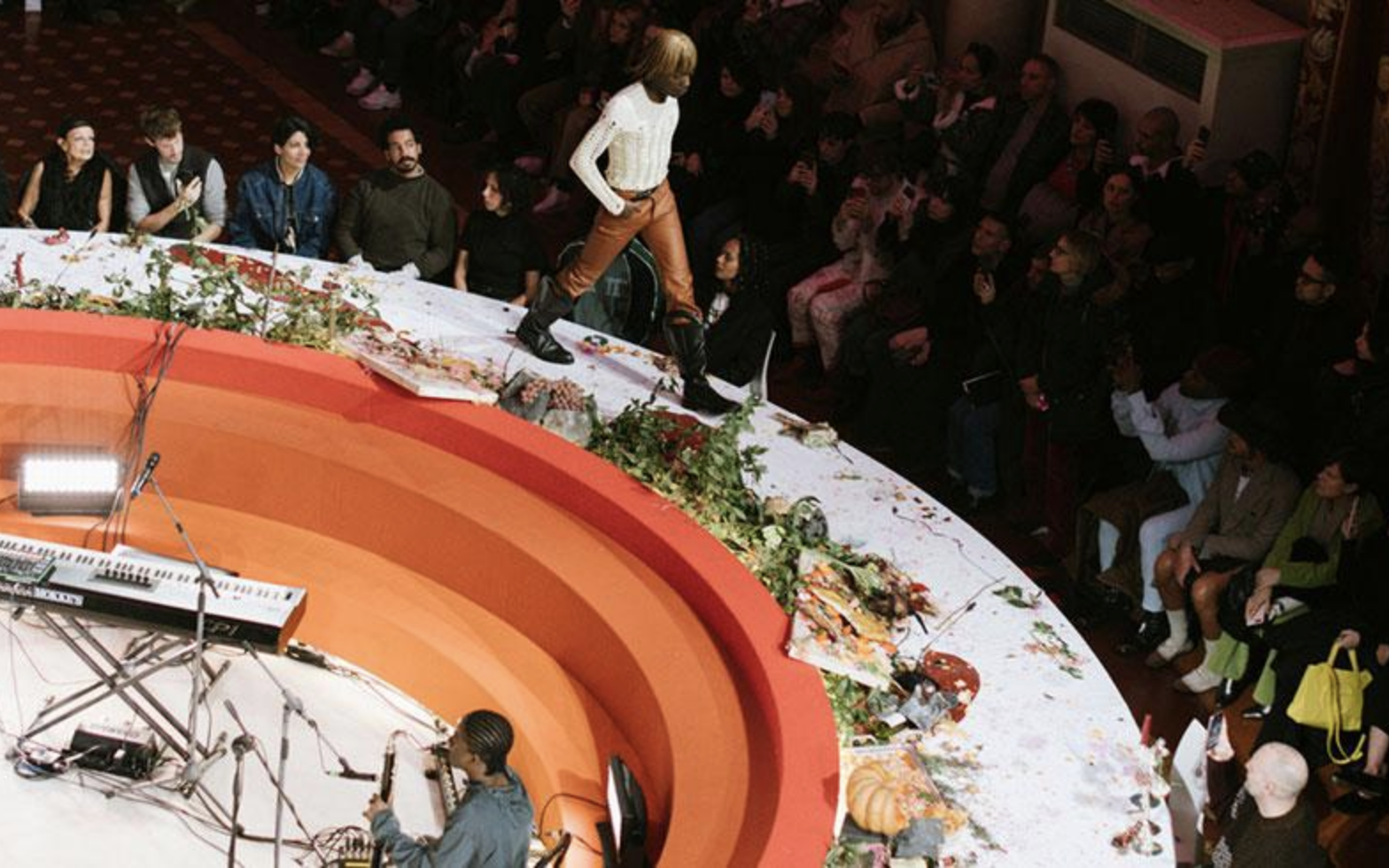TELFAR CLEMENS
By Michael Bullock
Photography by Eeva Suurati
Frieze.com, 2020
With a bacchanalian presentation at Pitti Uomo, the New York designer continues to take the fashion world by storm
In mid-December last year, I received a curious invitation from the fashion designer Telfar Clemens. ‘We have invited 50 artists to spend the night with us in a neoclassical palace we are renaming BloodShed for an evening of eating, drinking, talking and dancing; sleeping, rehearsing and conspiring; readings, screenings and schemings,’ it read. ‘Our show the next day will be the result and the residue of this time we spend together.’ This would be Clemens’s first presentation in Florence at Pitti Uomo, the prestigious menswear showcase founded in 1972. Twice a year, the organization invites three prominent designers to present new runway collections, with this January’s iteration also featuring two designers beloved by the fashion industry: Jil Sander and Stefano Pilati. The buzz, however, was all about Clemens, the Liberian-American designer whose namesake sportswear brand, TELFAR, has been a favourite of New York’s downtown art and nightlife communities since its founding in 2005. TELFAR’s steady climb accelerated in 2017 after it became the first Black-owned company to win the Vogue CFDA Fashion Fund award, one of the industry’s highest honours.
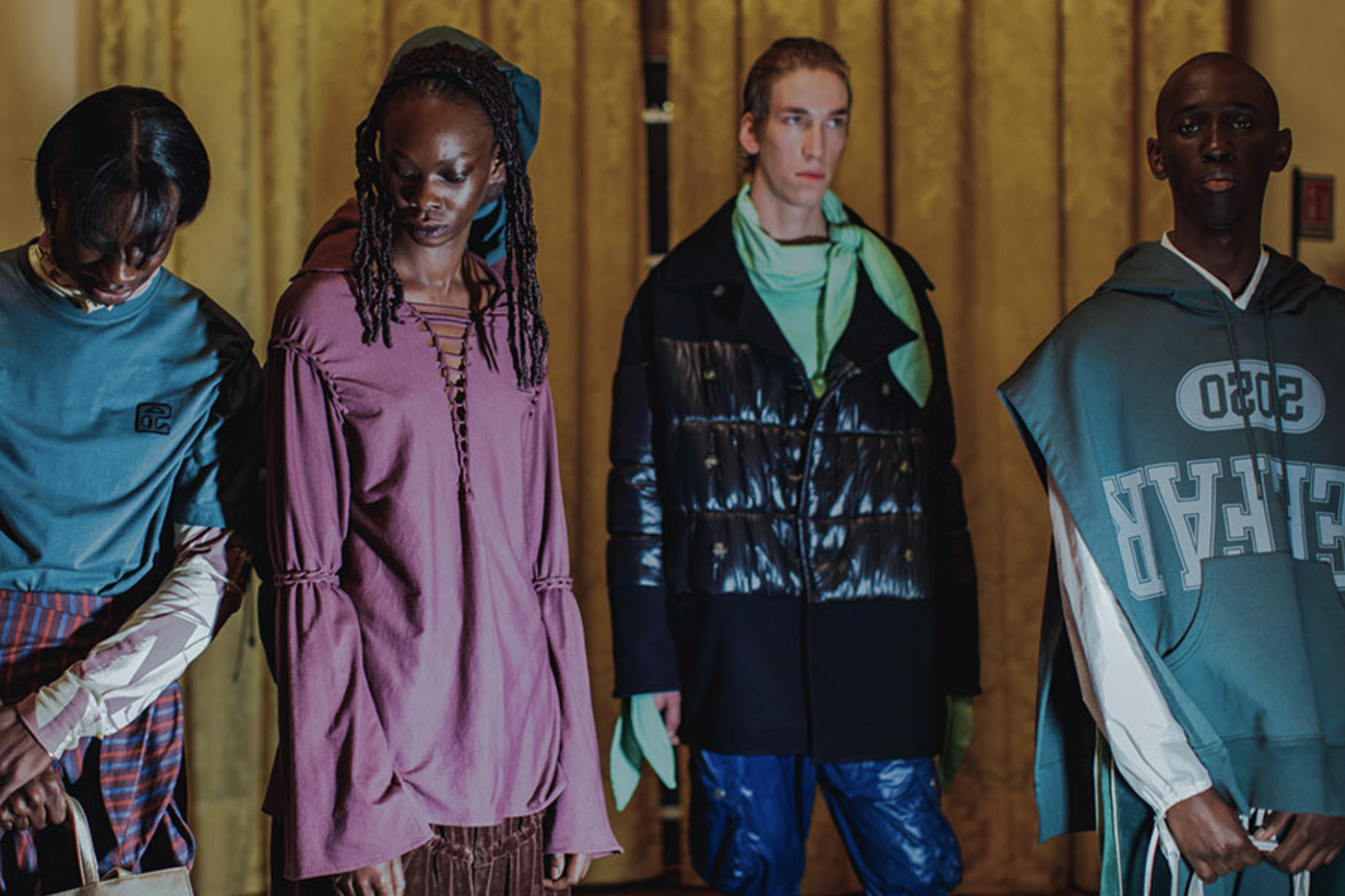
Clemens’s presentations have always been collaborative, informed by his friendships with artists such as Ryan Trecartin and Lizzie Fitch, the playwright Jeremy O. Harris and musicians like Dev Hynes and Kelela. I had been invited to Florence to attend what Clemens described as a ‘two-night artist residency’ that would honour the many creative friends and collaborators who inspire his brand. Composer Fatima Al-Qadiri, furniture designer Rich Aybar, filmmaker Kahlil Joseph, musician Solange Knowles and artist Wu Tsang were among the 50 guests who convened for what felt like a cross between a creative conference and a lavish destination wedding.
Palazzo Corsini commands a broad stretch of the River Arno’s right bank. Purchased in 1649 by Maria Maddalena Macchiavelli, the wife of the Marchese Filippo Corsini, it is a model of Florentine Renaissance grandeur. As we filed through its iron gates on the evening of 8 January, red lights blinked ominously in second-floor windows above its courtyard colonnade. Inside, up a grand statue-lined staircase, lay an opulent throne room with frescoed ceilings. There, Clemens and his creative director, Babak Radboy, had installed an enormous, circular table with microphone stands at each seat, reminiscent of the war room in Stanley Kubrick’s Dr. Strangelove (1964). Yet, containing a central orchestra pit outfitted with a drum kit and a piano, the red and white table, under the glare of several spotlights, summoned less a vision of Cold War militarism than an atmosphere of erotic excess. We sat before a lavish spread of fruit, cheese and intriguing edible sculptures that had to be tasted to be identified. Candelabra dripped wax and pools of fake blood stained the tablecloth.
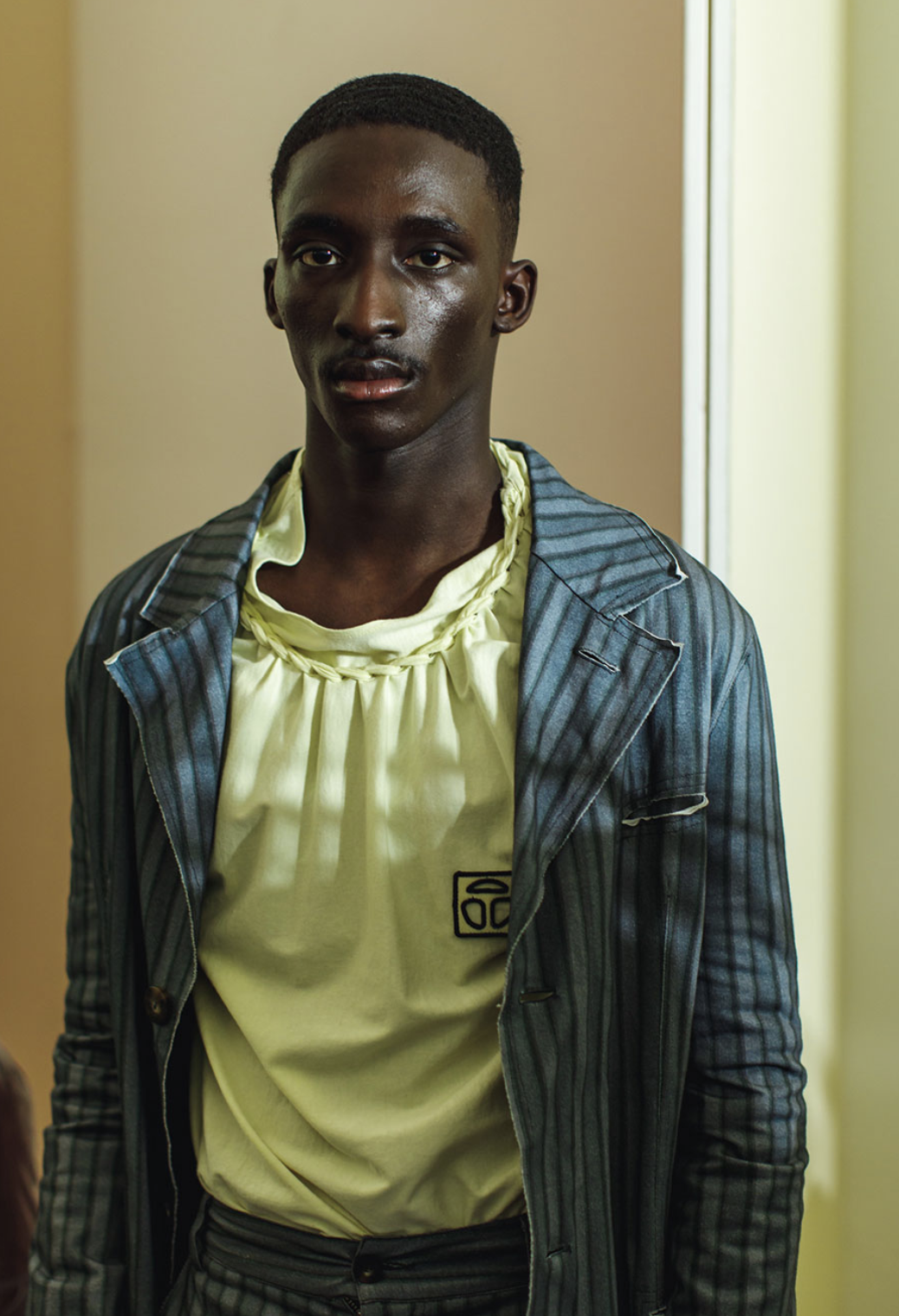
Radboy began the show with an invocation. ‘When I talk about my body, I’m talking about my real life,’ he declared to the room. ‘I’m talking about my blood and rivers of blood and bloodshed – a good name for a space.’ An exuberant Clemens, dressed in a red halter top with a built-in oversized scarf, offered a joyful New Year’s toast: ‘Welcome to the next chapter of TELFAR! Your lives, my life: 2020, 2030, 5050, 100/100! When are you gonna get to talk to these people again? Kiss the person next to you and let’s cheers!’ A multi-layered bacchanal unfolded as 50 extroverts feasted in an arena designed for exhibitionism, entertaining one another with a seven-hour jam session, captured by a film crew. The crowd reacted to each performance as they might to a breakdancing circle: when one guest jumped into the middle, the rest provided cheers and commentary. Musicians Hirakish, Hawa, Butch Dawson and Standing on the Corner all performed, though the breakout star of the night was Carrie Stacks, who brought the room to silence with her fervent vocals and piano. The flamboyantly baroque eight-course menu, devised by New York-based queer collective Spiral Theory Test Kitchen, boasted dishes such as ‘whipped bone marrow with wild Venice bitch pink peppercorns served in bone with blood orange confetti and fibreglass salt’. Fashion icon Michèle Lamy dropped in for dessert, a ‘pigs blood chocolate pavlova with candied buddhas hand’. As I ate, I asked London-based DJ Crystallmess, seated beside me, what she thought was the highlight of the evening. ‘No fashion bitch energy! Only true artist!’ she deadpanned, adding: ‘To be honest, it also feels like a meeting of the new Black Illuminati.’
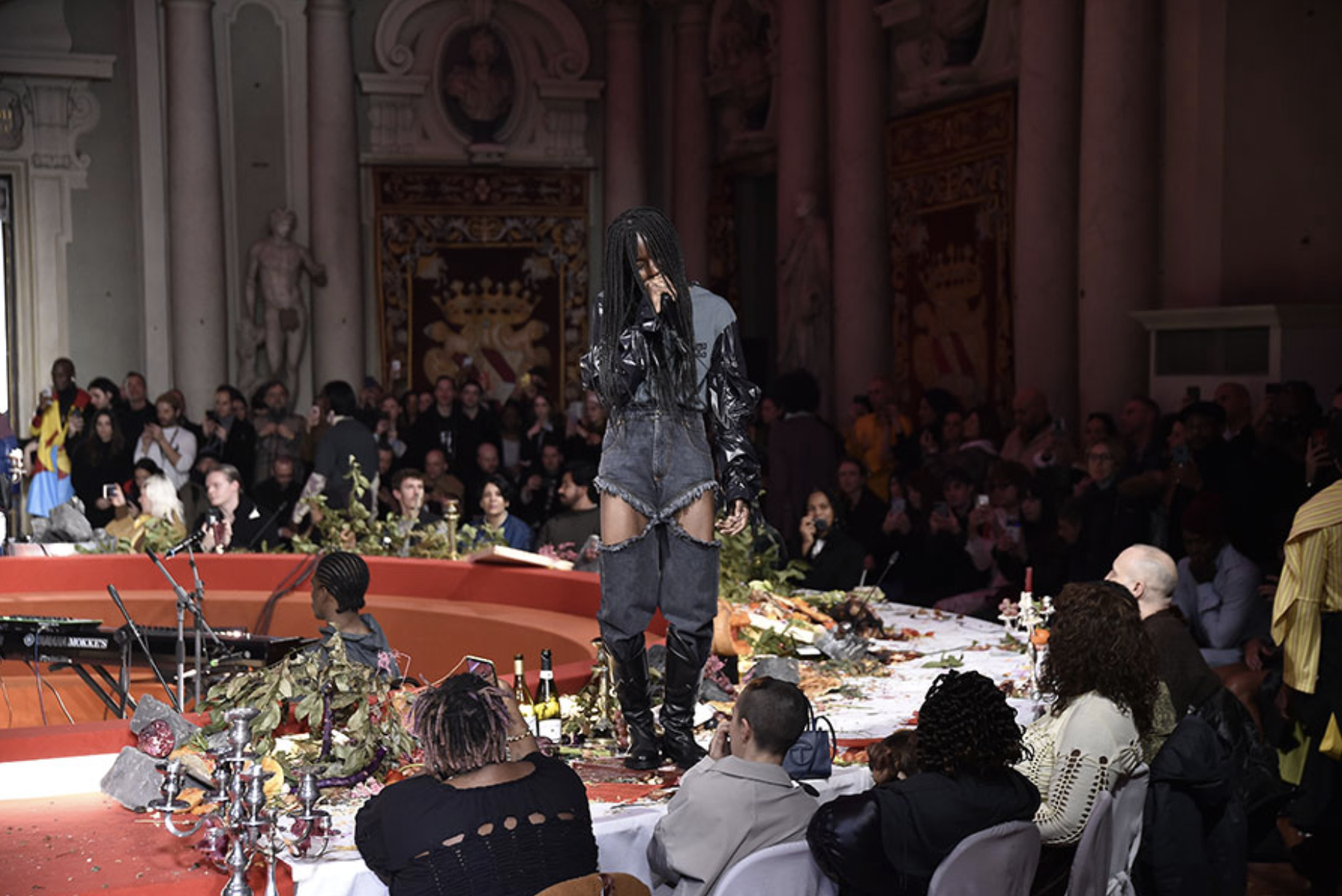
The following evening, the dinner guests returned – but this time with the fashion industry in tow. Editors, designers and influencers filed into the ballroom, crusted with the remains of the feast from the night before. The title of the show they had come to see, ‘THE WORLD ISN'T EVERYTHING Pt. III’, combined with the debauched war room seemed to mock the heteropatriarchy while flirting with Clemens’s own ambitions as he mounted Pitti’s international stage. Standing on the Corner performed again in the centre of the dining table while models used it as a perilous runway, crushing pomegranate seeds beneath their heels. A series of drawings by writer and artist Brontez Purnell adorned several T-shirts and dress shirts; appropriated from Miguel Covarrubias’s illustrations for the first edition of Zora Neale Hurston’s Mules and Men (1935), the figures now wore clothes by TELFAR. The collaboration between Clemens and Purnell echoed the many queer friendships of the 1920s Harlem Renaissance, between such leading voices as Langston Hughes, Alain Locke and Hurston herself. Peasant peplums tops were paired with reinterpreted bell-bottoms and velour tracksuits – unlikely 13th-century cuts in 21st-century materials. The Harlem Renaissance met the Italian Renaissance in a new efflorescence of queer Black culture. The show credits described this hybrid as ‘baroque ornament with humble material and form – like a lapsed Medici on spring break in Miami Beach’.
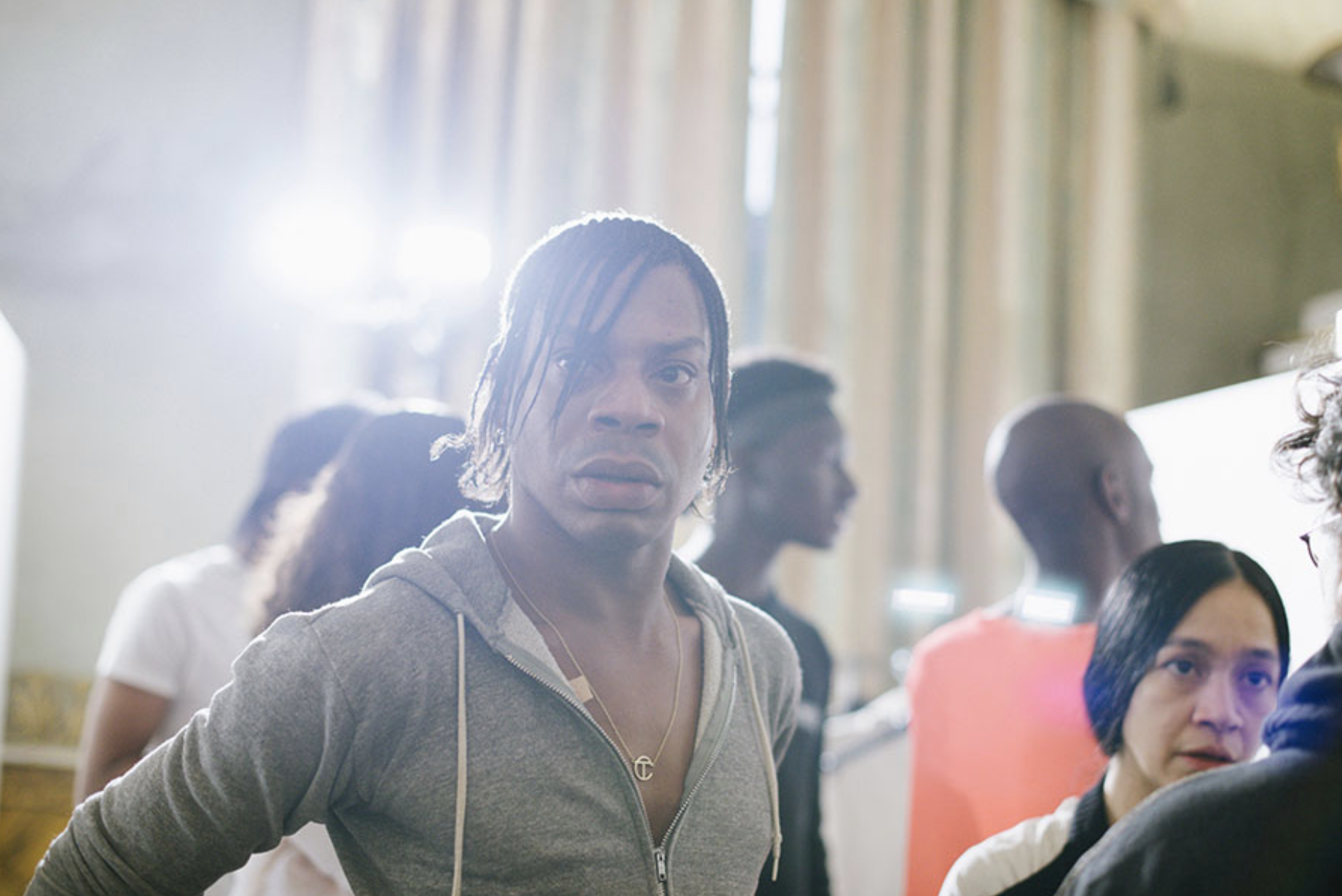
The next day, after the stage was struck, Clemens and his team flew to Paris to announce a new partnership with Gap. An outsider for the better part of his career, Clemens has now been asked to design a collection for the most mass-market of brands. If his defiantly queer, gender-inclusive sportswear has come a long way, he’s bringing mainstream culture along for the ride. Hold on tight.
